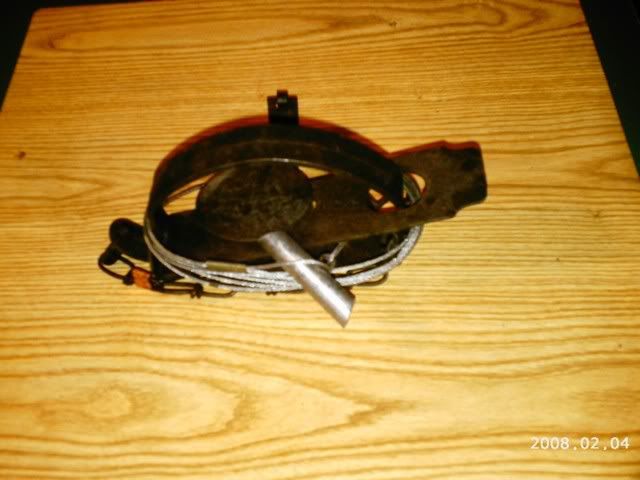Post by southernlures on Jul 2, 2012 5:00:21 GMT -5
Well yrs ago i used to take a roll of 11 gauge wire and some rebar stakes and bags for rocks. Wire pliers and lure, Axe and small hand saw. Not to mention packing in traps for the sets as well.
Now my beaver trapping situation is quite different. I have a drowner rig attached to trap and on the drowner rig there is and anchor for setting the top of drowner in the mud bank. I still pack a small saw.
Now can you see the way my trapping has been transformed since the coming of age of the cable and the anchor systems of today. My pack basket is about 30 to 40 pounds lighter than it used to be. And with the onset of the infirmities of age setting in these new age materials couldn't have come along at a better time.
No more packing a role of heavy gauge wire. I will cut enough wire for each rig and put it on the cable rig attached to trap. I don't have to pack the heavy wire pliers of old. I carry a leather man on my belt. I don't have to pack a bunch of bags around in the pack basket anymore. I don't have to carry the rebar t stakes anymore.
When i reach a location where i want to set a foot hold with the drowner rig i just reach in the pack basket and pull out the trap which all ready has the drowner and anchor attached. I then find a limb pole laying around strong enough to wire the drowner to. And in a pinch i will use a green pole. Then undo the wire i cut prior to leaving home from the drowner rig and wire the drowner cable to the pole on the end that goes into the muddy bottom. Then i will take the anchor setter and sink the anchor that is all ready attached to the drowner into the bank. The push the pole in the muddy bottom. Then pull the pole down to the bank and stake it in place with a cable stake with a adjust able top loop.
Now how hard was that. It is getting easier to set these types of traps today vs what it used to be like. Trapping has changed with all the new devises and ideas that are being shared. Below is a picture of the rig set up on a number 4 Blake and lamb Jump trap.

Now how simple is that for trapping beaver!!!!!!!
Now my beaver trapping situation is quite different. I have a drowner rig attached to trap and on the drowner rig there is and anchor for setting the top of drowner in the mud bank. I still pack a small saw.
Now can you see the way my trapping has been transformed since the coming of age of the cable and the anchor systems of today. My pack basket is about 30 to 40 pounds lighter than it used to be. And with the onset of the infirmities of age setting in these new age materials couldn't have come along at a better time.
No more packing a role of heavy gauge wire. I will cut enough wire for each rig and put it on the cable rig attached to trap. I don't have to pack the heavy wire pliers of old. I carry a leather man on my belt. I don't have to pack a bunch of bags around in the pack basket anymore. I don't have to carry the rebar t stakes anymore.
When i reach a location where i want to set a foot hold with the drowner rig i just reach in the pack basket and pull out the trap which all ready has the drowner and anchor attached. I then find a limb pole laying around strong enough to wire the drowner to. And in a pinch i will use a green pole. Then undo the wire i cut prior to leaving home from the drowner rig and wire the drowner cable to the pole on the end that goes into the muddy bottom. Then i will take the anchor setter and sink the anchor that is all ready attached to the drowner into the bank. The push the pole in the muddy bottom. Then pull the pole down to the bank and stake it in place with a cable stake with a adjust able top loop.
Now how hard was that. It is getting easier to set these types of traps today vs what it used to be like. Trapping has changed with all the new devises and ideas that are being shared. Below is a picture of the rig set up on a number 4 Blake and lamb Jump trap.

Now how simple is that for trapping beaver!!!!!!!
